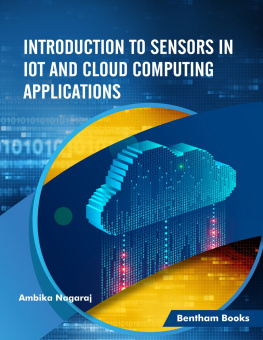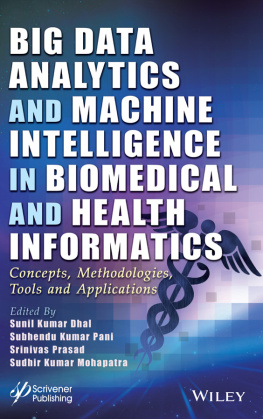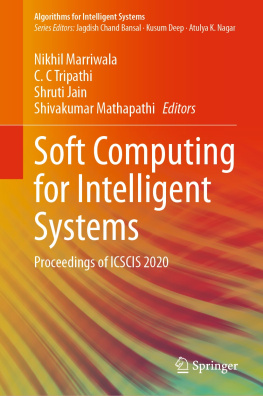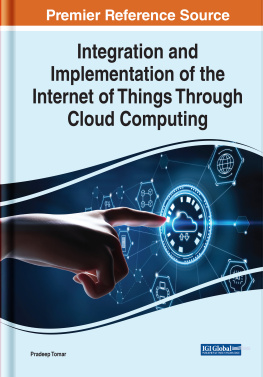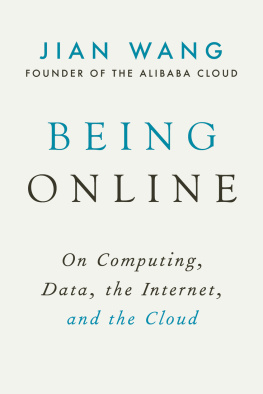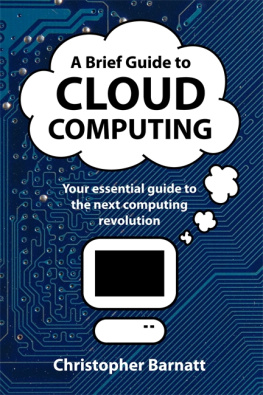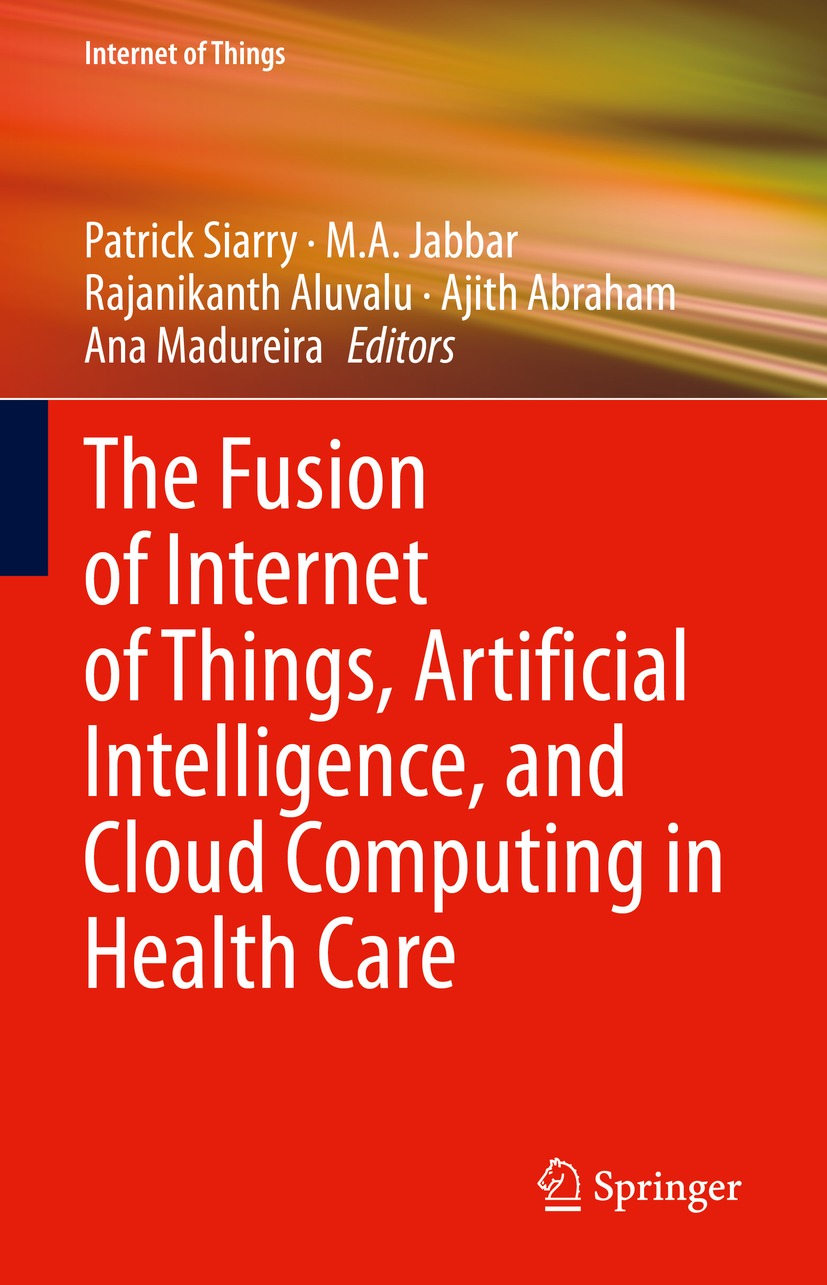Internet of Things Technology, Communications and Computing
Series Editors
Giancarlo Fortino
Rende (CS), Italy
Antonio Liotta
Edinburgh Napier University, School of Computing, Edinburgh, UK
The series Internet of Things - Technologies, Communications and Computing publishes new developments and advances in the various areas of the different facets of the Internet of Things.
The intent is to cover technology (smart devices, wireless sensors, systems), communications (networks and protocols) and computing (theory, middleware and applications) of the Internet of Things, as embedded in the fields of engineering, computer science, life sciences, as well as the methodologies behind them. The series contains monographs, lecture notes and edited volumes in the Internet of Things research and development area, spanning the areas of wireless sensor networks, autonomic networking, network protocol, agent-based computing, artificial intelligence, self organizing systems, multi-sensor data fusion, smart objects, and hybrid intelligent systems.
** Indexing: Internet of Things is covered by Scopus and Ei-Compendex **
More information about this series at http://www.springer.com/series/11636
Editors
Patrick Siarry , M. A. Jabbar , Rajanikanth Aluvalu , Ajith Abraham and Ana Madureira
The Fusion of Internet of Things, Artificial Intelligence, and Cloud Computing in Health Care
1st ed. 2021

Logo of the publisher
Editors
Patrick Siarry
Universit Paris-Est Crteil, Crteil, France
M. A. Jabbar
Vardhaman College of Engineering, Hyderabad, Telangana, India
Rajanikanth Aluvalu
Vardhaman College of Engineering, Hyderabad, Telangana, India
Ajith Abraham
Machine Intelligence Research Labs, Auburn, Washington, USA
Ana Madureira
School of Engineering, Instituto Superior de Engenharia, Porto, Portugal
ISSN 2199-1073 e-ISSN 2199-1081
Internet of Things
ISBN 978-3-030-75219-4 e-ISBN 978-3-030-75220-0
https://doi.org/10.1007/978-3-030-75220-0
The Editor(s) (if applicable) and The Author(s), under exclusive license to Springer Nature Switzerland AG 2021
This work is subject to copyright. All rights are solely and exclusively licensed by the Publisher, whether the whole or part of the material is concerned, specifically the rights of translation, reprinting, reuse of illustrations, recitation, broadcasting, reproduction on microfilms or in any other physical way, and transmission or information storage and retrieval, electronic adaptation, computer software, or by similar or dissimilar methodology now known or hereafter developed.
The use of general descriptive names, registered names, trademarks, service marks, etc. in this publication does not imply, even in the absence of a specific statement, that such names are exempt from the relevant protective laws and regulations and therefore free for general use.
The publisher, the authors and the editors are safe to assume that the advice and information in this book are believed to be true and accurate at the date of publication. Neither the publisher nor the authors or the editors give a warranty, expressed or implied, with respect to the material contained herein or for any errors or omissions that may have been made. The publisher remains neutral with regard to jurisdictional claims in published maps and institutional affiliations.
This Springer imprint is published by the registered company Springer Nature Switzerland AG
The registered company address is: Gewerbestrasse 11, 6330 Cham, Switzerland
Introduction
The healthcare industry is one of the most advanced in implementing and adopting emerging technology in some form. AI and cloud computing techniques, along with IoT, are useful in analyzing imaging and genetic data to extract information from clinical data. In many cases, IoT integrated with the cloud and AI will open new paths to innovation and insight in the medical domain. The fusion of AI, IoT, and cloud computing-based diagnostic systems will help doctors and medical practitioners predict various diseases by improving the speed of diagnosis and accuracy.
This book is a collective reference that provides a collection of research on the applications of IoT, cloud computing, and artificial intelligence in health care. This book is ideally designed for medical professionals, researchers, academicians, developers, and postgraduate students. The chapters presented in this book are unique to this book and explore the applications of emerging technologies in the healthcare domain.
The content is structured into 12 chapters, which are further classified into Part I and Part II. Part I discusses the foundational concepts of IoT, cloud, and artificial intelligence in health care. Part II covers the applications of IoT, cloud, and artificial intelligence in tackling COVID-19 and other pandemic diseases.
Chapter provides an Overview of the Medical Internet of Things, Artificial Intelligence, and Cloud Computing Employed in Health Care from a Modern Panorama. The connected IoMT device provides objective reports of the patients actual activity, helping to monitor their behavior and activities outside the office, allowing physicians to have real data of patient compliance and therapy recommendations.
The authors highlight Healthcare Data Storage Options Using the Cloud in Chap.. In this chapter, the healthcare data storage options on the cloud as well as the security of healthcare data are described.
A Review on Classification and Retrieval of Biomedical Images Using Artificial Intelligence is provided in Chap.. This chapter reviews the existing content-based medical image retrieval systems and techniques used for feature extraction and image classification.
The Diagnosis of Breast Cancer by Malignant Changes in Buccal Epithelium Using Artificial Intelligence, the Internet of Things, and Cloud Storage is discussed in Chap.. The authors proposed a model to detect tumor-associated changes in the fractal structure of chromatin in people with fibroadenomatosis and breast cancer.
Chapter focuses on the Smart IoT Treatment: Making Medical Care More Intelligent. This chapter explores a conceptual model for understanding the factors determining patient satisfaction with the use of artificial intelligence in health care.
Chapter highlights the Privacy and Security Concerns in IoT-Based Healthcare Systems. This chapter proposes a framework for securing healthcare information on the IoT-based platform. This chapter also demonstrates the architecture of the extensive healthcare system based on IoT, the technological problems, and some standard implementations relevant to comprehensive health care. Data safety, privacy, and confidentiality are looked into IoT-based security and privacy in healthcare systems.
Chapter explores IoT Healthcare Applications. With the use of IoT technology, treatment and monitoring will be more precise and in proper order. This chapter concludes with IoT applications that enable patients to access data and personalized care and reduce visits to the hospital.


